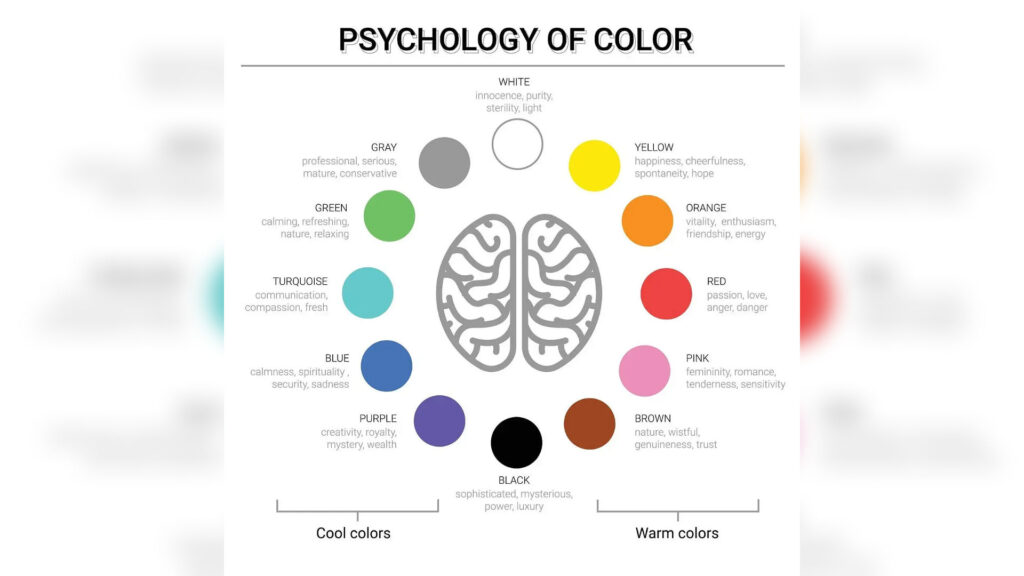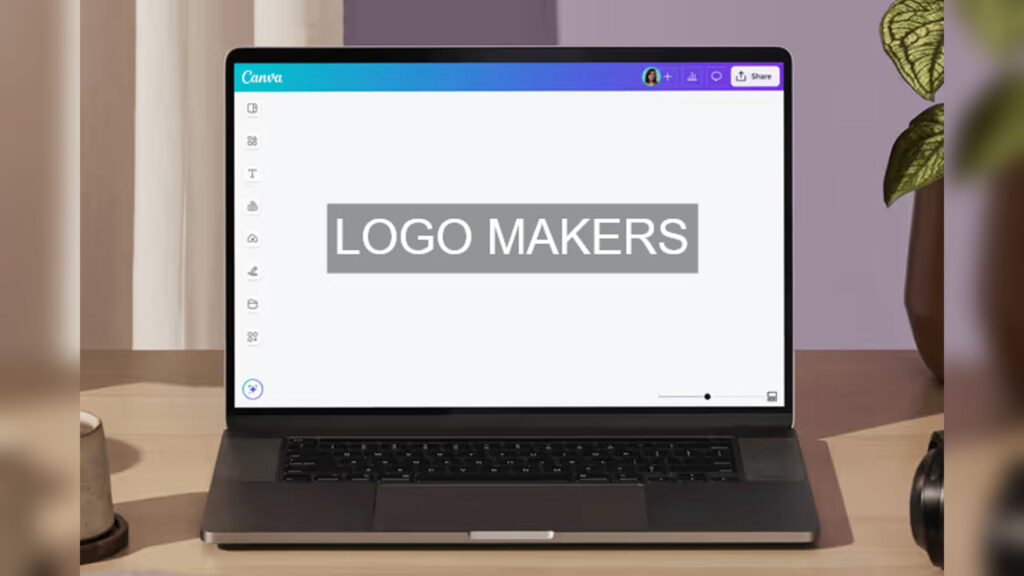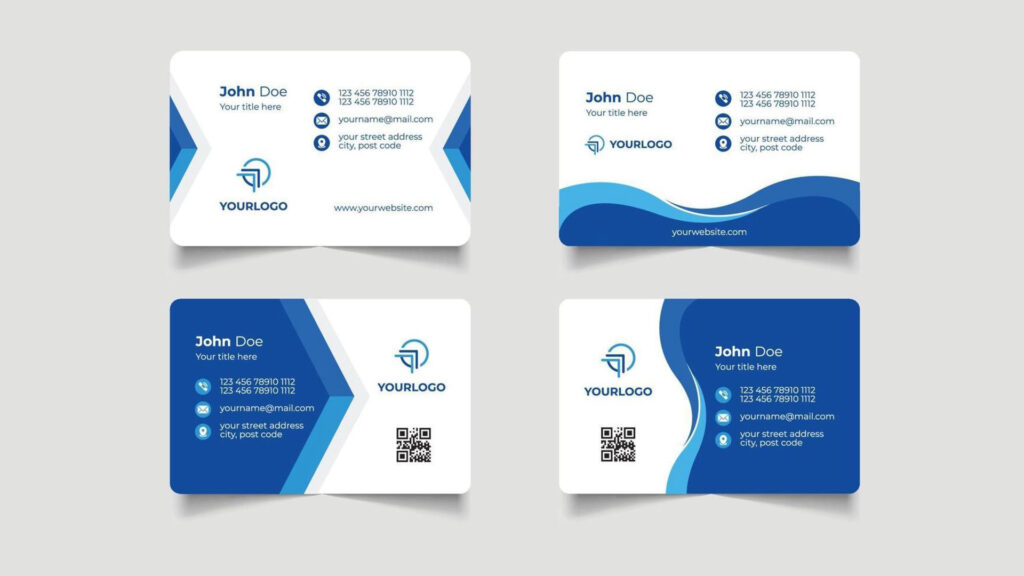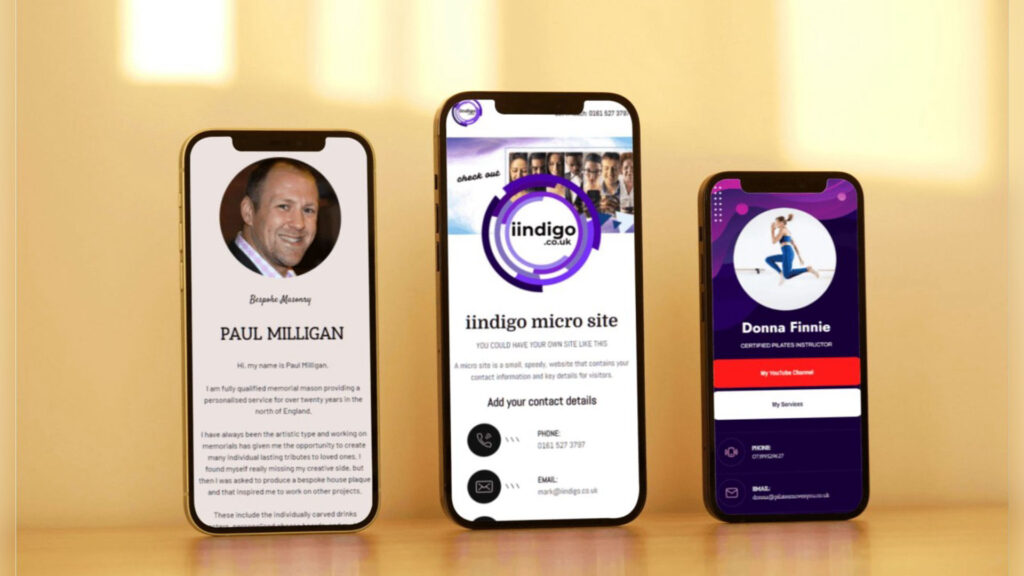Understanding digital design today means going beyond colors, buttons, and layouts. When people talk about apps, websites, or digital products, they often mix two ideas as if they are the same. Yet these two concepts shape every experience we have online. They are UI and UX.
Many business owners know these terms. Many designers use them every day. But very few can clearly explain where one stops and the other begins. That gap causes confusion during hiring, poor project decisions, and products that fail to connect with users.
This article breaks everything down in simple language. No jargon. No robotic definitions. Just a practical look at what UI and UX really mean, how they work together, and why understanding the Difference Between ui and ux is Breaking Down the Real Difference Between ui and ux can transform your design process.
Table of Contents
ToggleWhat UI Actually Means in Real Life
UI stands for user interface. It is every visual element you interact with on a screen.
When you open an app, you see colors, shapes, icons, text, and layouts. When you tap a button and it animates, that is the interface responding. UI makes digital products look appealing, easy to read, and comfortable to navigate.
A designer working on UI focuses on:
Visual style
They choose color combinations, typography, shadow depth, spacing, and the overall look of the product.
Layout and structure
Screens are arranged so that information flows in a clean and organized way.
Interactive elements
Buttons, sliders, forms, cards, navigation bars, pop-ups, and anything the user can touch or click.
Consistency
All screens must feel like they belong to the same brand. This builds trust and familiarity.
UI design is more than making things pretty. It aims to guide the user visually and make actions feel natural. A good UI reduces confusion and increases clarity.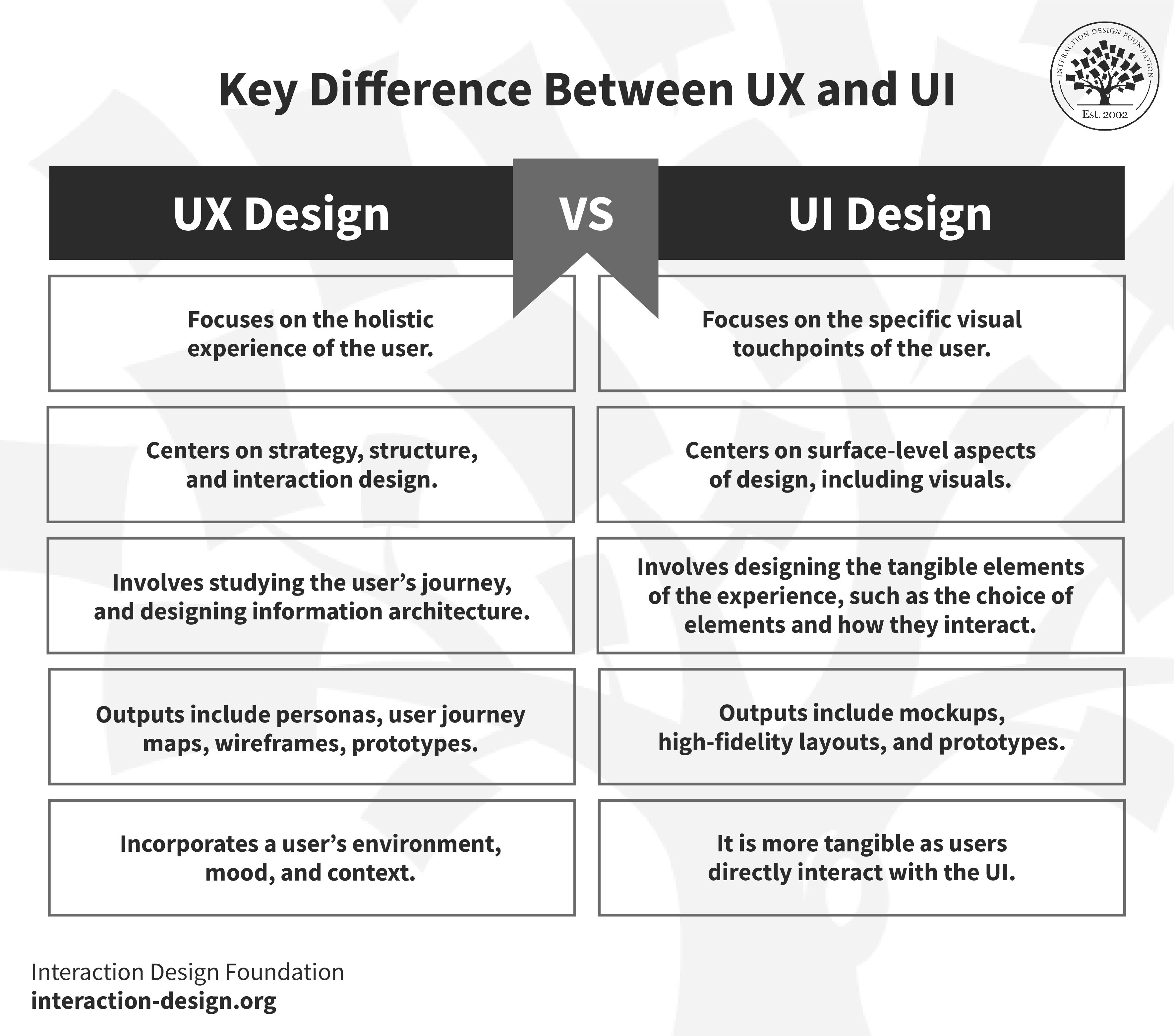
What UX Means and Why It’s Not the Same as UI
UX stands for user experience. While UI handles the visuals, UX handles the journey the user takes from start to finish.
A UX designer cares about how well the product works, not just how it looks. They focus on user goals, frustrations, and expectations.
A UX workflow usually includes:
Research
Understanding the target audience through interviews, surveys, and studying behavior.
Usability
Testing how easily users complete tasks. If users get stuck, the experience is not working.
Information structure
Organizing content and features in a way that matches how people think, not how the company wants to present them.
Wireframing
Sketching rough layouts before adding any visual style.
User journeys
Mapping how people move from one point to another inside the product.
UX is about problem-solving. It ensures the product is useful, simple, and satisfying.
UI Makes Things Beautiful. UX Makes Them Useful.
This is one of the easiest ways to understand the Difference Between ui and ux is Breaking Down the Real Difference Between ui and ux.
Imagine entering a restaurant.
UI is the furniture, the lighting, the menu design, the plates, the uniform worn by the staff.
UX is the whole experience from walking in, finding a seat, placing an order, waiting for food, eating, paying, and leaving.
You can have a beautiful restaurant with terrible service.
You can have great service with poor décor.
A perfect experience needs both.
UI and UX work the same way.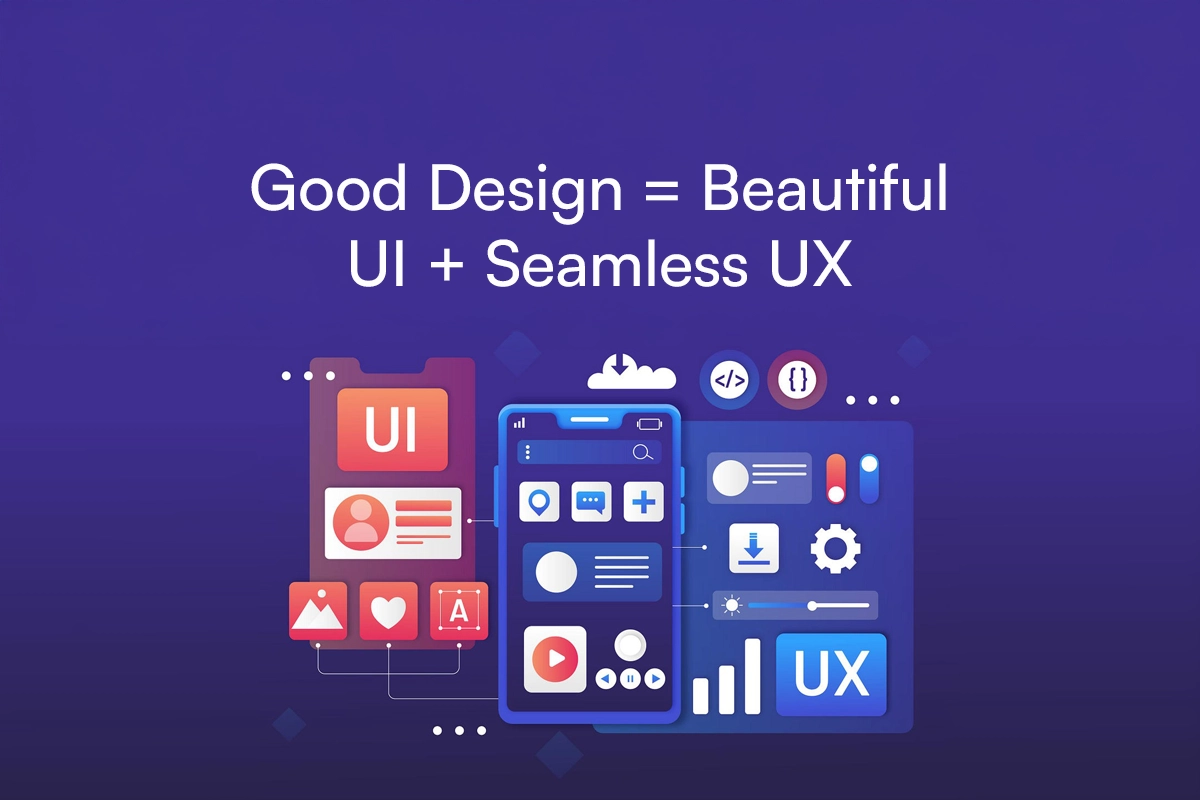
Why People Confuse UI and UX
Most people confuse these two roles for one reason: they are closely connected. A product with good UX but bad UI still feels broken. A product with great UI but poor UX feels frustrating.
Here is why the lines get blurry:
Both deal with how users interact
They are both design roles that rely on user behavior.
Both use similar tools
Many designers use Figma, Adobe XD, or Sketch for both UI and UX tasks.
Many companies hire one person to do both
Startups and small companies often combine UI and UX into a “UI/UX Designer” role.
They overlap in the design process
UI builds on top of wireframes created during UX. They work in a chain.
A Simple Way to Separate UI and UX
If you want a short, clear answer:
UX is the blueprint.
UI is the decoration.
UX decides what should be built based on user needs.
UI decides how it should look and feel.
UX solves problems.
UI creates visual solutions.
UX focuses on structure.
UI focuses on appearance.
How UI and UX Work Together in Real Projects
A successful digital product requires both. They rely on each other, step by step, during development.
Step 1: Research and discovery
UX gathers information about user frustrations, goals, habits, and expectations.
Step 2: Wireframes
UX sketches the structure with no decoration.
Step 3: Visual design
UI applies final colors, illustrations, icons, animations, and typography.
Step 4: Prototyping
UI brings the visuals to life. UX tests the flow to ensure it meets user needs.
Step 5: Testing and improvement
Both designers work together to refine the user journey and interface details.
This teamwork produces the final experience users will love.
Why Understanding the Difference Matters for Businesses
Many business owners assume UI alone can fix everything. They invest in “making the website look modern” and forget about user experience. This leads to:
-
High bounce rates
-
Low conversions
-
Confusing layouts
-
Users struggling to find what they need
-
Poor sales even with beautiful visuals
On the other hand, UX without UI feels plain and unfinished. Users may trust the journey, but the screens fail to impress or connect emotionally.
When businesses understand the Difference Between ui and ux is Breaking Down the Real Difference Between ui and ux, they start making better decisions. They budget correctly. They hire correctly. Their digital products perform better.
Why UI and UX Matter Today More Than Ever
People spend most of their time online. Competition is higher. Attention spans are shorter. If you fail to guide users, they leave. If your app feels confusing, they uninstall it. If your website loads well but the flow is chaotic, they exit and choose your competitor.
Great UI and UX improve:
-
Conversion rates
-
Customer satisfaction
-
User retention
-
Brand reputation
-
Engagement
-
Accessibility
A well-designed product can bring in more revenue without increasing marketing costs.
Real Examples That Show the Difference Clearly
A ride-hailing app
UX decides the user journey from requesting a ride to arriving at the destination.
UI decides the button style, map colors, and icon shapes.
A mobile banking app
UX ensures money transfers are easy, safe, and logical.
UI ensures the screens look clean, calm, and trustworthy.
An e-commerce site
UX ensures the checkout steps are simple.
UI ensures product photos, ratings, and buttons look attractive.
Once you grasp this, the confusion disappears.
Skills Needed for UI Design
UI designers often focus on:
-
Color theory
-
Typography
-
Layout design
-
Visual hierarchy
-
Iconography
-
Design systems
-
Brand direction
-
Micro-interactions
They must understand how people interpret visuals and what makes an interface beautiful and clear.
Skills Needed for UX Design
UX designers often focus on:
-
User research
-
Wireframing
-
Prototyping
-
Usability testing
-
User journey mapping
-
Information architecture
-
Problem-solving
-
Empathy and user psychology
They need to understand how people think and behave.
Can One Person Do Both UI and UX?
Yes. Many designers do both in smaller companies. But when a project grows in scale and complexity, separating these roles helps reach a higher quality outcome.
A dual UI/UX designer must balance visual creativity with logical problem-solving. It is a rare combination but very powerful.
How UI and UX Influence User Trust
Trust is now one of the strongest currencies online. People don’t just choose products based on features—they choose based on how confident and safe they feel while using them. That trust is shaped by both UI and UX in different ways.
How UI builds trust
A clean layout, modern colors, legible fonts, and consistent design elements signal professionalism. When a user sees a well-polished interface, their mind instantly feels more comfortable. They assume the brand behind it is reliable.
A confusing or outdated interface creates doubt, even before the user interacts with anything.
How UX builds trust
UX builds trust through behavior. If the app or website works smoothly, loads fast, and allows users to complete tasks without confusion, trust grows naturally. When information is clear and steps make sense, people feel the product was designed for them—not against them.
UI builds the first impression. UX maintains that trust over time.
How Bad UI Affects Good UX
A product might have the best journey and logical structure, but poor visuals break the experience. Imagine having a perfect onboarding flow with wrong color choices, tiny text, and cluttered screens. Even if the steps are correct, users will feel overwhelmed.
Bad UI leads to:
-
Visual fatigue
-
Difficulty understanding where to tap or click
-
Frustration
-
Increased bounce rates
-
Abandoned sessions
It becomes clear that UX alone can’t carry the product.
How Bad UX Affects Good UI
On the flip side, you may have stunning visuals, smooth animations, and modern elements, but users still abandon the product. This happens when the experience itself is badly structured.
Signs of bad UX include:
-
Too many steps to complete a task
-
Hidden essential features
-
Confusing navigation
-
Slow or unclear flow
-
Unnecessary pop-ups or dead ends
Good UI might impress users at first glance, but bad UX pushes them away quickly.
Why Knowing the Difference Helps You Hire the Right Designer
A common mistake businesses make is hiring a “graphic designer” to do UI and UX. While graphic design skills are helpful for UI, they don’t automatically make someone a UX expert.
When you understand the Difference Between ui and ux is Breaking Down the Real Difference Between ui and ux, you ask better questions during interviews and choose the right talent.
Here’s what to look for:
When hiring a UI designer
Look for strong visual portfolios. Screens should feel consistent, clean, and aesthetically pleasing.
When hiring a UX designer
Look for case studies, not just pretty screens. Case studies should show research, testing, user insights, and problem-solving.
Making the right hire prevents wasted money, slow results, and poorly designed products.
Why Understanding UI and UX Helps You Scale Your Business
Businesses in Kenya, Africa, and across the world are becoming more digital. Websites, apps, and online services are now the first point of contact between brands and customers.
When UI and UX are understood and used correctly, businesses gain:
-
Higher conversion rates
-
More customer trust
-
Increased referrals
-
Better online reputation
-
Lower customer support costs
-
Stronger brand loyalty
Understanding the Relationship Between UI and UX is almost like understanding marketing. Both play a direct role in attracting, converting, and retaining customers.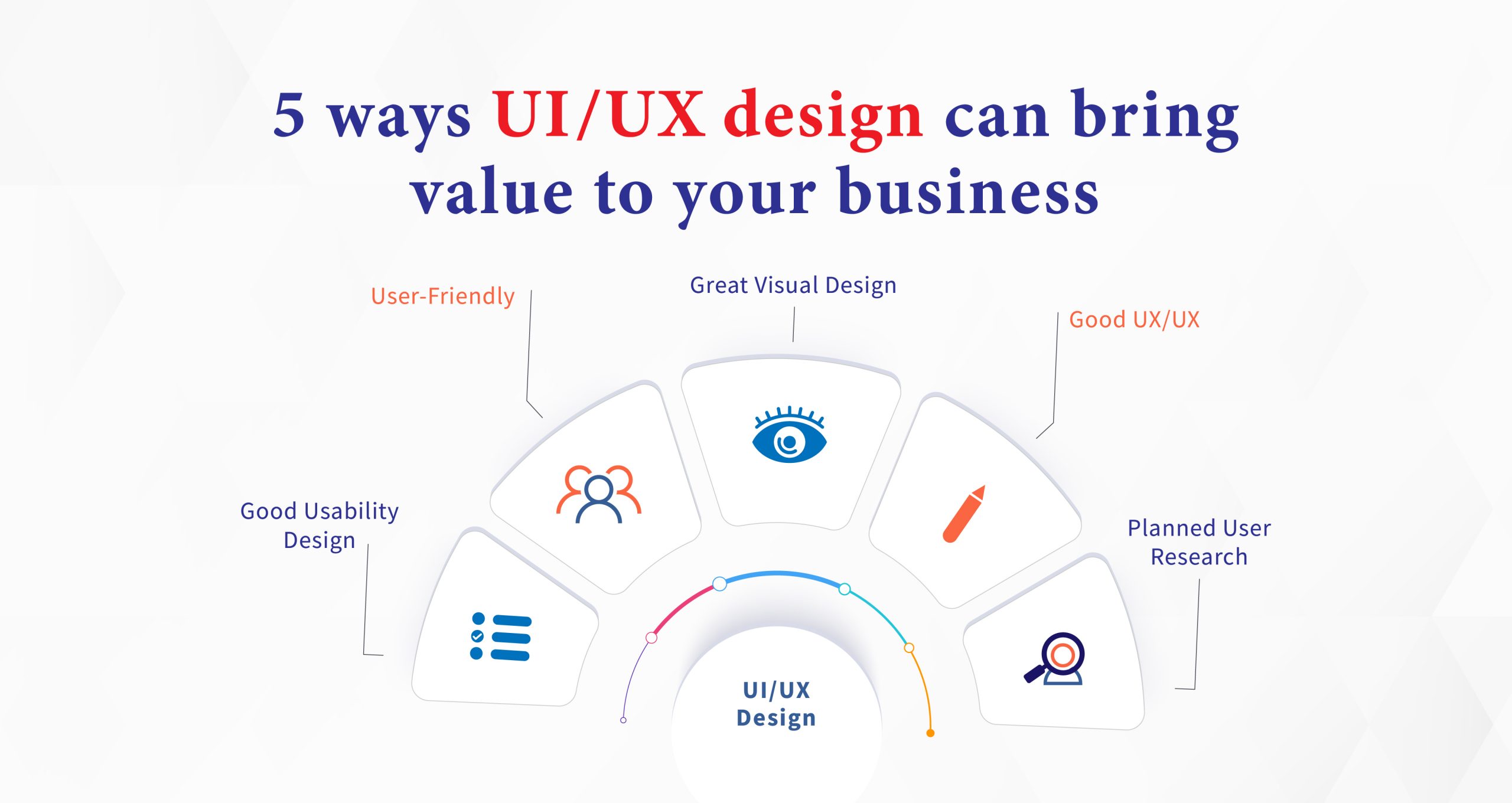
The Future of UI and UX
The future of digital design is evolving fast. Products no longer compete only on functionality. They compete on how they make users feel.
Here are some emerging trends shaping the future:
Personalized experiences
Products will learn user habits and adjust themselves automatically.
Minimal interfaces
Clean, simple designs will dominate. Less clutter, more clarity.
Voice-driven experiences
UI will evolve beyond screens. Think voice commands and AI-driven interactions.
Micro-interactions
Small animations will guide users emotionally and make products feel alive.
Accessibility-focused UX
Products must work for everyone, including people with disabilities.
Designers who understand both UI and UX will remain in high demand.
Mistakes Beginners Make When Learning UI and UX
Many new designers enter the field with the wrong expectations. Here are the common mistakes:
Jumping straight into colors and buttons
UI comes later. UX starts with structure and research.
Copying designs without understanding the reasoning
A pretty layout without logic solves nothing.
Ignoring user feedback
Designers are not the users. Real users guide real improvements.
Overusing animations
Movement should support usability, not distract from it.
Designing for themselves instead of the audience
UX always starts with empathy.
Avoiding these mistakes helps designers grow faster and produce work that actually matters.
How UI and UX Impact Revenue Directly
This part is rarely talked about, but it is one of the strongest reasons businesses should care. Design doesn’t only affect beauty—it affects money.
Here’s how:
Smooth UX reduces drop-off
Every extra step during checkout costs a business money. Cleaner flows = more completed sales.
Strong UI increases user confidence
People are more likely to buy from a website that looks trustworthy.
Better UX improves onboarding
A product that is easy to use from day one keeps more users active.
Good UI lowers customer support calls
When screens are clear, users don’t need help figuring things out.
Design can directly raise or lower revenue.
Putting Everything Together
UI and UX are different but deeply connected. One focuses on looks. The other focuses on experience. The Difference Between ui and ux is Breaking Down the Real Difference Between ui and ux helps both designers and businesses understand what really makes a digital product successful.
UI answers the question:
How does it look?
UX answers the question:
How does it work?
When these two meet in harmony, users stay longer, trust the brand more, and return more often. That is the goal of every modern product.
A Deeper Look at How UI and UX Shape First Impressions
When a user lands on your website or opens your app for the first time, they make a judgment within seconds. That judgment decides if they will continue exploring or close the window instantly.
This reaction is controlled by both UI and UX, but in different ways.
UI shapes the emotional reaction
The visual look hits the brain first. Humans are emotional by nature, so they respond to color, layout, spacing, and imagery instantly. A clean and modern UI makes users feel calm and confident. A messy interface triggers discomfort.
UX shapes the logical reaction
Once the emotional response settles, the user begins to interact with the product. If the navigation is smooth, the flow feels natural, and the steps are clear, the experience feels right. If not, frustration replaces curiosity.
Both reactions matter. A product with poor UI never gets a chance to prove its UX. A product with poor UX wastes the opportunity created by good UI.
This shows again why the Difference Between ui and ux is Breaking Down the Real Difference Between ui and ux matters for anyone trying to build a memorable digital experience.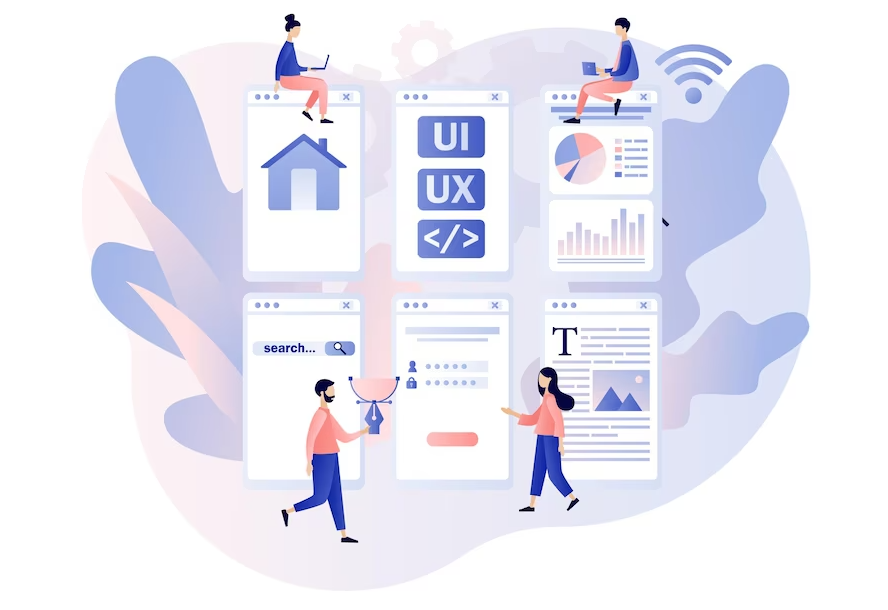
How UI and UX Affect Mobile Users Differently
Mobile use continues to grow across Africa, Europe, Asia, and the world. Traffic from phones is often higher than desktop traffic. That means UI and UX decisions must adapt to small screens.
Here’s how each one matters on mobile:
UI for mobile
On mobile, UI must focus on readability and touch-friendly controls. Buttons need proper spacing. Text must be clean and large enough. Color contrast must be strong to help users read content outdoors or in low light.
Small screens reveal UI mistakes faster.
UX for mobile
UX must consider the user’s environment. Mobile users often multitask, move around, or interact quickly. Simpler flows work better. Faster navigation works better. Shorter forms work better.
Mobile UX is about reducing friction while keeping important actions accessible.
When UI and UX are balanced on mobile, users enjoy smooth interactions without thinking twice.
Why UI and UX Matter Even If You Use Templates
Many people assume that using a template solves their design problems. Templates can help, but only to a point. They cannot replace real UI and UX thinking.
Here’s why:
Templates provide structure
They give you a starting point but don’t guarantee your brand identity. UI work still matters.
Templates don’t know your audience
They are built for general use, not your users’ goals or frustrations.
Templates don’t solve business problems
Only UX research can help you understand what your customers really need.
Templates can help speed up design work, but human thinking must guide the final experience.

What Happens When UI and UX Are Done Right
When UI and UX are done correctly and connected well, users experience:
-
Easy onboarding
-
Fast learning curves
-
Smooth navigation
-
Emotional connection
-
Fewer errors
-
Stronger brand trust
-
Better engagement
-
Higher conversion rates
Users may not always notice good design, but they always notice bad design.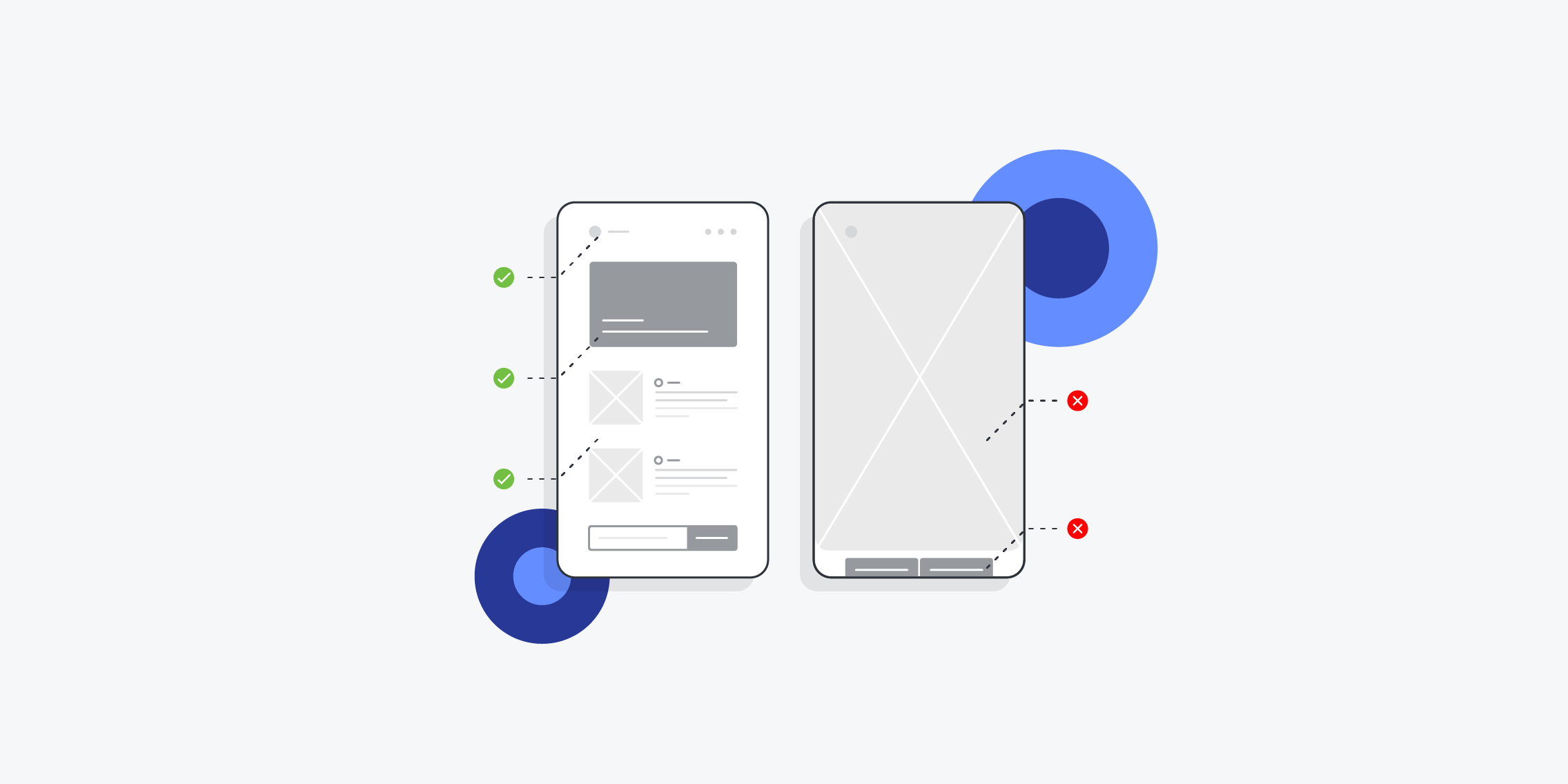
What Happens When UI and UX Are Done Wrong
Bad UI and UX lead to:
-
Confusion
-
Low trust
-
Poor navigation
-
High bounce rates
-
Abandoned carts
-
User frustration
-
Negative reviews
-
Low retention
When users struggle, they leave. No amount of marketing can fix a bad experience.

The Relationship Between UI, UX, and Branding
Branding is the personality of a business. UI and UX both support branding, though in different ways.
UI supports visual identity
Colors, typography, imagery, and layout reflect the brand’s tone.
A bold brand chooses strong colors.
A calm brand uses soft tones.
A modern brand uses sharp, clean edges.
The UI becomes the visual voice of the brand.
UX supports emotional identity
UX reflects how the brand treats people. If the journey is smooth, helpful, and respectful of time, users feel cared for. If the experience is confusing or stressful, the brand feels careless.
When UI and UX align with branding, the result is a strong identity users remember.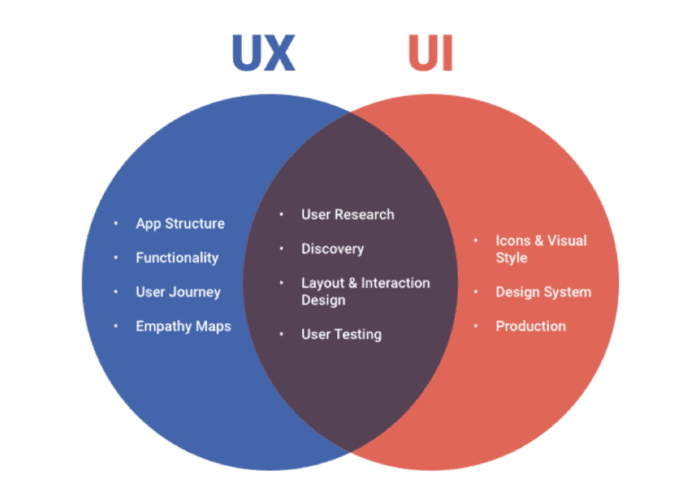
A Real-World Example That Explains Everything Clearly
Let’s use a simple scenario.
Imagine an online food delivery app.
UX sets the foundation
-
How to search for food
-
How to filter options
-
How to create an order
-
How fast the process should be
-
How to track your delivery
-
How to fix an issue or change an address
This structure is the heartbeat of the app.
UI brings the idea to life
-
Colors that make food look appetizing
-
Easy-to-read menus
-
Clear icons for rating, delivery time, and distance
-
Well-designed buttons for adding to cart
-
Friendly confirmations when you order
This presentation makes the experience enjoyable.
Together, UI and UX work like a chef and a waiter. One prepares the perfect meal. The other presents it beautifully.
Career Paths in UI and UX
More young people, especially in Africa, Asia, and the Middle East, are choosing digital design as a career. Understanding the Difference Between ui and ux is Breaking Down the Real Difference Between ui and ux helps new designers choose the path that fits their strengths.
If you love visuals, follow UI
This path is great for people who enjoy colors, layout design, typography, and creating beautiful screens.
If you love problem-solving, follow UX
This path is perfect for people who enjoy understanding psychology, improving processes, and testing ideas.
If you love both, follow UI/UX
This hybrid role is common in startups and agencies.
All three paths are growing fast and offer global job opportunities.
Tools Used in UI and UX
Both fields use similar tools, but for different purposes.
UI tools
-
Figma
-
Adobe XD
-
Sketch
-
Photoshop
-
Illustrator
Used mainly for visual layouts, components, icons, and design systems.
UX tools
-
Figma
-
Axure
-
Balsamiq
-
Miro
-
Notion
-
Maze
Used for research, mapping, wireframes, prototyping, and testing.
Tools change, but thinking remains the most valuable skill.
How to Know If You Need UI, UX, or Both
If your product looks outdated but functions well, you need UI.
If your product looks modern but confuses users, you need UX.
If your product has both issues, you need both.
Most businesses benefit from both working together.
Final Thoughts: UI and UX Shape the Digital World
Every digital product you love is a result of UI and UX working together. They influence how people think, feel, and act. They shape trust. They guide decisions. They help users achieve their goals without confusion.
Understanding the Difference Between ui and ux is Breaking Down the Real Difference Between ui and ux is more than a design lesson. It is a business advantage, a user advantage, and a creative advantage.
As technology grows, design becomes more important. Brands that invest in UI and UX win. Brands that ignore them fall behind.
Final Thoughts
UI and UX are different, but they are tightly connected. Understanding this relationship helps businesses build better digital products and helps designers deliver work that truly serves users. The Difference Between ui and ux is Breaking Down the Real Difference Between ui and ux shows that both roles shape the final experience, but from different angles.





